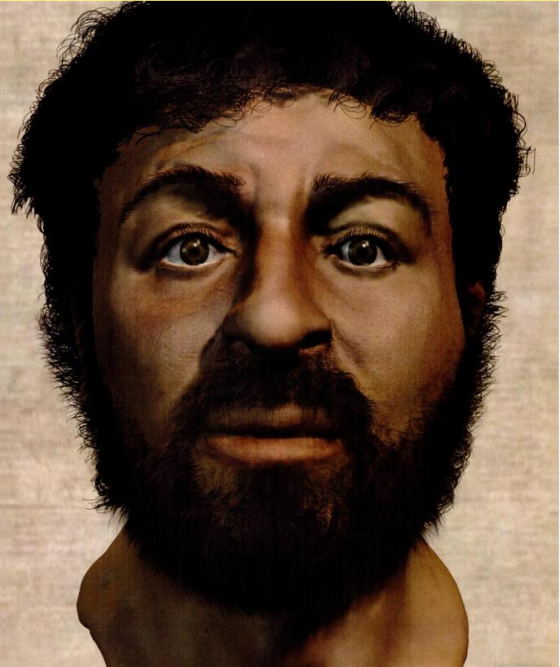
The Sunday Mail

LET us focus on scriptural details and examine them critically.
1. Sedated while crucified
During crucifixion, the Gospel of Mark says Yahoshua was offered a drink, which was a mixture of myrrh and wine before he was put on the cross. (Mark 15:23)
According to Hebrew custom, a drink with myrrh and wine was given to a person to lose consciousness as an act of kindness, that is so that he becomes insensible to pain through intoxication.
Therefore, the drink was responsible for the loss of Yahoshua’s consciousness and bowing of his head. The drink was a specially prepared intoxicant and Yahoshua lost consciousness peacefully.
This was consistent with sedation or intoxication.
If he had suffocated as a result of the drink, he would have produced an immediate cough reflex, which is a natural reaction to an irritant in the air passage or he would have struggled to breathe after drinking before losing consciousness.
After drinking, Yahoshua said “it is finished, after which he bowed his head and ‘gave up his spirit” (John 19:30).
There is no mention of any difficulty or problem encountered while taking the drink.
It appears he took as much as he wanted and it was only after drinking that he said “it is finished”. If he was choked or suffocated during drinking, he would not voluntarily had spoken.
His bowing of the head before the stoppage of breathing establishes the intoxicating effect of the drink.
2. No fatal injury suffered
Yahoshua suffered no fatal injuries which could have killed him. The only fatal injury he suffered was from the thrust of a “spear” by a soldier on the right side. (John 19:34)
It is recorded that as a result of the thrust, his injury produced an immediate flow of “blood and water” (watery blood).
“Blood pouring out is a sign of intact circulation, with the spear injuring an arteriole. Note the words ‘sudden flow’ which implies blood pressure. The ‘water’ was perhaps pleural fluid, present between the rib cage and lungs.
“As blood does not rush out of corpses, the quoted verse did present a problem to at least one church father, Origen. In his exegesis of John 19:34, he admitted that blood coagulates after death, but the flow of blood in this case constituted a miracle and thus needed no explanation.” (“Contra Celsus”, Origen, translated by H Chadwick, Cambridge University).
Scientifically, when blood is drawn from a living body it becomes separated into two parts, a thick substance (fibrin) and a watery fluid (serum).
The piercing of Yahoshua’s body by a spear did not cause his death. Yahoshua did not die as a result of blood loss (Matthew 27:46-50, Mark 15:34-37, Luke 23:46, John 19:28-30).
If Yahoshua had died from crucifixion, his blood would have clotted and no blood would have gushed out of his body later when his side was pierced.
Only a few drops of clotted blood are expected from a dead body.
This clearly testifies that Yahoshua was not dead when he was pierced.
3. Respiratory movements
The words “he gave up his spirit” (Luke 23:46, John 19:30) merely signify that he stopped active breathing. Respiratory movements are considered as evidence of life but their absence does not necessarily mean the absence of life.
Breathing normally becomes shallow and slow when one experiences a severe shock, or a deep coma when associated with general breathing incapacity and exhaustion.
Shallow or low reflex respiration creates enough exchange of air inside the lungs to keep the vital organs like the heart and brain alive.
A shallow and low breathing may be unnoticeable on ordinary examination and therefore the person may look lifeless.
4. Short duration during crucifixion
Crucifixion was a lingering death and several days usually elapsed before the victim died.
First century Hebrew historian Flavius Josephus described survivors of crucifixions in his writings while the Greek writer Plutarch (c75 CE) “mentions some individuals surviving some ten days on the cross”.
“Death by (crucifixion) method was usually quite protracted, rarely supervening before 36 hours, and on occasion taking as long as nine days”. (New Bible Dictionary, 1962, Intervarsity Press, page 282)
Breathing is ordinarily difficult for a person who is crucified because it is one of the most abnormal and uncomfortable body positions to be in.
The person has to struggle for his breath continuously as fatigue and exhaustion set in. Slowly, the body begins to suffer from suffocation and this can bring about circulatory collapse.
This may eventually lead to loss of consciousness and death. By the time Yahoshua took the drink, he had not suffered from any marked degree of suffocation, otherwise he would not have talked and drank as he did.
When “he breathed his last”, it was the active struggle to breathe that had stopped. The heart continued to beat after his body had been wrapped and put in the tomb.
Let’s continue next week with more scriptural indications if Yahoshua died during crucifixion.
Feedback: email [email protected], or tweet @shingaiRndoro. A gallery of previous articles is found at www.sundaymail.co.zw/author/shingairukwata.



